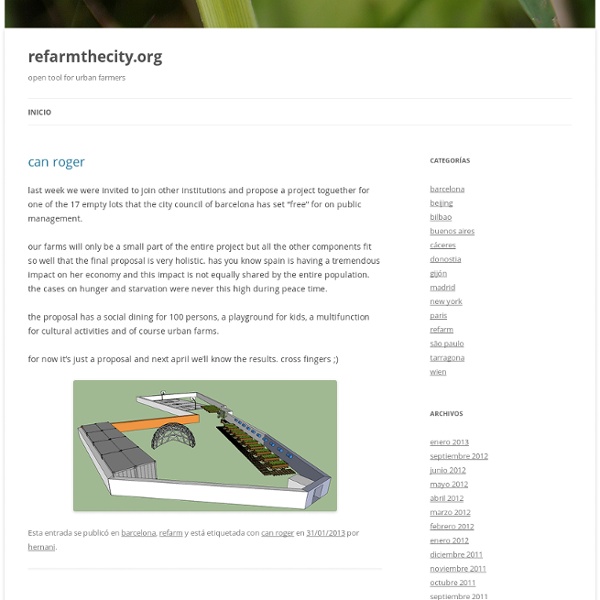Laboratoire d’Urbanisme Agricole
Worgamic
GREEN RUSH
Lutte contre l’artificialisation, que font nos voisins ? / Gestion de l'espace-Urbanisme / Nos thématiques
Le constat d’une artificialisation démesurée des espaces agricoles tant en France que dans les autres pays européens a conduit le ministère de l’agriculture à mettre en place une veille sur les pratiques régionales des pays voisins en matière de gestion économe de l’espace. Ce travail de « benchmark » inédit a abouti à la publication début mai 2012 d’un rapport corédigé par le conseil général de l’environnement et du développement durable (CGEDD) et le conseil général de l’alimentation, de l’agriculture et des espaces ruraux (CGAAER). L’étude des pratiques des régions du Bade Wurtenberg (Allemagne), de la Flandre (Belgique), du Pays Basque espagnol et du canton Bâle-Campagne (Suisse) fait ressortir des difficultés communes mais aussi des pistes envisagées pour faire face à l’inquiétante réduction des surfaces agricoles et naturelles. Christopher de Laburthe
Vincent Callebaut Architecte DRAGONFLY
The world of fast-food and frozen food is over! The urban keen interest of the beginning of our Century turns toward the garden flat bringing back the countryside in our overcrowded cities fighting from now on for a community urban agriculture able to contribute to the durability of the city and to rethink the food production. On the roofs, terraces, balconies, in the hollow of the non-built public spaces, in the interior yards and the suspended greenhouses, the eco-warrior aspires to escape from its competitive and consumeristic universe imposed by the laws of the market. He desires to cultivate its immediate landscape so as to better take root in the ground by creating his own ecologic and alimentary biodiversity. The consumer becomes from then on producer and the garden inhabitant ! According to the PNUD (Programme of the United Nations for the Development), the worldwide urban population will go from 3.1 billion of inhabitants in 2009 up to 5.5 billion of inhabitants within 2025.
Atelier CMJN
eVolo, projet lauréat : les clefs de la victoire
Lauréate de l’édition 2011 du concours eVolo, la proposition 'LO2P' de l’équipe Julien Combes-Gaël Brulé, en prenant la forme d’une roue géante, s’éloigne des images canoniques de tours et autres structures verticales. «Par définition, le concours eVolo offre beaucoup de liberté dans l’interprétation du concept de gratte-ciel. Nous voulions quelque chose de haut et nous sommes partis sur quelque chose de rond en référence à l’oxygène», explique Julien Combes. La métaphore n’est pas anecdotique. Un centre de recyclage automobile en partie basse fournit l’acier de la structure du projet LO2P, dont le sommet est dédié à des espaces verts. Ce filtre géant «utilise les énergies produites lors du processus de recyclage des voitures». «Nous sommes partis du constat que les ressources naturelles s’épuisent rapidement et que, par ailleurs, la plupart des produits manufacturés telles les voitures reposent sur des énergies fossiles qui, une fois épuisées, rendront la voiture obsolète.
The Taiwan Tower is a Sustainable Twin Syscraper for the 21st Century
The Taiwan Tower is a proposal by Vienna-based architect Steven Ma in Collaboration with San Liu, Xinyu Wan, and Emre Icdem. This highly innovative project consists of a set of super slim twin towers that reach a height of 350 meters where an observatory and sky-park is located. The plinth of the towers is formed by an intricate set of museums that will exhibit Taiwan’s past, present, and future. Each of the three museums configures itself around recreational areas that include a water plaza, an outdoor theatre, a green house, and an event plaza. Another interesting feature is the location of four different types of hanging gardens along the towers’ structure with high-end residences and an aviary for endangered bird species. To commemorate the 9th Annual Skyscraper Competition, eVolo is publishing the Limited Edition Book "eVolo Skyscrapers 2" which is the follow-up to its highly acclaimed book “eVolo Skyscrapers”. -> EVOLO SKYSCRAPERS 2 - Limited Edition Book
Bosco Verticale : une forêt dans la ville (diaporama)
Dans son vaste projet de réaménagement urbain BioMilano, en prévision de l’exposition internationale de 2015, l’architecte transalpin Stefano Boeri prévoit la construction d’une ceinture verte et d’immeubles végétalisés afin de redonner des espaces verts à la capitale économique italienne. Car la ville lombarde est polluée et manque d’espaces verts. Il a donc imaginé, entre autres, deux tours d’habitation de grande hauteur disposant de terrasses implantées en quinconce, et totalement végétalisées. Actuellement en cours de construction dans le quartier Garibaldi-Repubblica, les deux immeubles mesurent respectivement 80 et 112 mètres. Une idée dans l’air du temps La végétation aidera à la régulation climatique, en produisant de l’humidité, en absorbant du CO2, et en rejetant de l’oxygène. Le projet, d’un coût estimé à 65 M€, devrait être achevé en 2013.
Eco-Pods Produce Bio-Fuel Energy
We have seen the financial outcome of the Real Estate crash in 2008. What sometimes we overlook are the urban voids left by unfinished buildings. That is the case of the Filene’s development in downtown Boston which construction was halted in November 2008. via Inhabitat & Flavorwire To commemorate the 9th Annual Skyscraper Competition, eVolo is publishing the Limited Edition Book "eVolo Skyscrapers 2" which is the follow-up to its highly acclaimed book “eVolo Skyscrapers”. -> EVOLO SKYSCRAPERS 2 - Limited Edition Book



